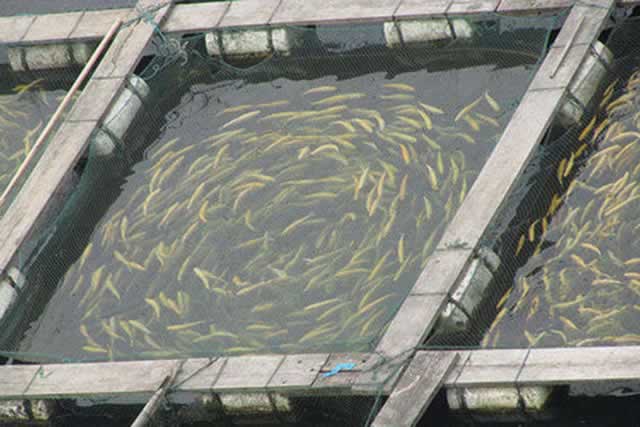
The Sunday Mail

 Construction of the fish ponds must be done professionally so as to minimise the risk of the pond becoming a haven for breeding mosquitoes
Construction of the fish ponds must be done professionally so as to minimise the risk of the pond becoming a haven for breeding mosquitoesExtensive aquaculture
Limiting for growth here is the available food supply by natural sources, commonly zooplankton feeding on pelagic algae or benthic animals, such as crustaceans and molluscs.
Tilapia species filter feed directly on phytoplankton, which makes higher production possible. The photosynthetic production can be increased by fertilising the pond water with artificial fertiliser mixtures, such as potash, phosphorus, nitrogen and micro-elements.
Because most fish are carnivorous, they occupy a higher place in the trophic chain and therefore only a tiny fraction of primary photosynthetic production (typically 1 percent) will be converted into harvest-able fish.
Another issue is the risk of algal blooms. When temperatures, nutrient supply and available sunlight are optimal for algal growth, algae multiply their biomass at an exponential rate, eventually leading to an exhaustion of available nutrients and a subsequent die-off.
The decaying algal biomass will deplete the oxygen in the pond water because it blocks out the sun and pollutes it with organic and inorganic solutes (such as ammonium ions), which can (and frequently do) lead to massive loss of fish.
An alternate option is to use a wetland system such as that of Veta La Palma.
In order to tap all available food sources in the pond, the aquaculturist will choose fish species, which occupy different places in the pond ecosystem, e.g., a filter algae feeder such as tilapia, a benthic feeder such as carp or catfish and a zooplankton feeder (various carps) or submerged weeds feeder such as grass carp.
Despite these limitations, significant fish farming industries use these methods.
In the Czech Republic, thousands of natural and semi-natural ponds are harvested each year for trout and carp. The large ponds around Trebon were built from around 1650 and are still in use.
Intensive aquaculture
In these kinds of systems fish production per unit of surface can be increased at will, as long as sufficient oxygen, fresh water and food are provided. Because of the requirement of sufficient fresh water, a massive water purification system must be integrated in the fish farm. A clever way to achieve this is the combination of hydroponic horticulture and water treatment.
The exception to this rule are cages which are placed in a river or sea, which supplements the fish crop with sufficient oxygenated water. Some environmentalists object to this practice.
The cost of inputs per unit of fish weight is higher than in extensive farming, especially because of the high cost of fish feed, which must contain a much higher level of protein (up to 60 percent) than cattle food and a balanced amino acid composition as well.
However, these higher protein level requirements are a consequence of the higher food conversion efficiency (FCR-kg of feed per kg of animal produced) of aquatic animals. Fish like salmon have FCR’s in the range of 1,1 kg of feed per kg of salmon whereas chickens are in the 2,5 kg of feed per kg of chicken range.
Fish don’t have to stand up or keep warm and this eliminates a lot of carbohydrates and fats in the diet, required to provide this energy.
This frequently is offset by the lower land costs and the higher productions, which can be obtained due to the high level of input control.
Essential here is aeration of the water, as fish need a sufficient oxygen level for growth. This is achieved by bubbling, cascade flow or aqueous oxygen.
Catfish, Clarias spp can breathe atmospheric air and can tolerate much higher levels of pollutants than trout or salmon, which makes aeration and water purification less necessary and makes Clarias species especially suited for intensive fish production. In some Clarias farms about 10 percent of the water volume can consist of fish biomass. The risk of infections by parasites like fish lice, fungi (Saprolegnia spp), intestinal worms (such as nematodes or trematodes), bacteria (e.g., Yersinia spp, Pseudomonas spp), and protozoa (such as Dinoflagellates) is similar to animal husbandry, especially at high population densities.
However, animal husbandry is a larger and more technologically mature area of human agriculture and better solutions to pathogen problem exist.
Intensive aquaculture does have to provide adequate water quality (oxygen, ammonia, nitrite, etc.) levels to minimise stress, which makes the pathogen problem more difficult.
This means, intensive aquaculture requires tight monitoring and a high level of expertise of the fish farmer. – Wikipedia.



